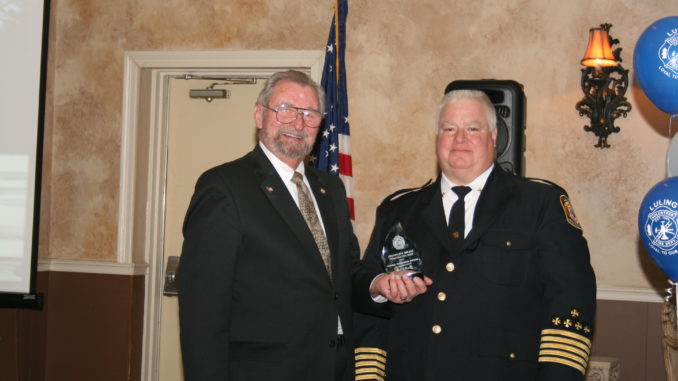
It was a Halloween night when Jack Crais was at a party and his pager went off concerning an accident that he still struggles with today as a firefighter.
“There were four young people going to a concert in New Orleans and an 18-wheeler flatbed made a U-turn that night,” said Crais of an accident on U.S. Highway 90 near the St. Charles Parish line. “Their vehicle basically went under part of the flatbed ripping the roof kind of back. All four of them were killed. It was just hard to deal with. They were attractive young people.”
In his many years with the Luling Volunteer Fire Department, the 81-year-old firefighter can recall responding to many accidents and fires. In January, the Luling resident will celebrate his 40th year with the department and considers it time well spent.
“The joke is you don’t have to be crazy to do this, but it helps,” Crais said.
In his time, he recalled witnessing “big time” change in firefighting.
When he first started training, how they fought fires was very different.
“We were told to attack the fire from the inside out … put in some water in a circular pattern, close the shutters to damp the fire down and then go outside to attack the fire,” Crais said.
The generally accepted approach has shifted.
“Opening the doors and charging in might not be the way to do it,” he said. “Tests revealed that fire goes to where the oxygen is so opening a door makes the fire come toward you.”
Although firefighting is more scientific now, Crais said the old idiom still stands, “Put the wet stuff on the red stuff.”
Equipment is more advanced, too. Personal protective equipment or bunker gear has become impressively fire resistant, as well as a self-contained breathing apparatus. Crais said it has improved so much that “sometimes it gives you a false sense of security to the point of going into places you shouldn’t in that gear.”
Communications have also improved with the arrival of the 911 system. Crais recalled the early fire phone system where people dialed a listed number that rang at 20 different locations. It evolved to radio equipment that set off firefighter’s pagers with a call and later dispatchers came on board that worked for years. But they system had issues, such as in one call from a woman who kept saying, “Jesus Christ, my house is on fire” but didn’t provide her address. They got it and arrived, but precious time was lost trying to locate the woman.
The 911 system centralized emergency calling to one number, which he said was a drastic improvement to get help.
The development of the emergency operations center or EOC is another advancement, Crais said. It came about for St. Charles Parish as a requirement that came with construction of Waterford III.
“It really helped bring us to modern times with emergency operations in the parish,” he said.
For Crais, being a firefighter has meant dedication, recounting the times he sat down for supper and his pager went off.
“You drop everything and respond,” he said. “We put in a lot of time.”
There are the meetings, training that can include weekends, checking trucks and equipment, and considerable technical knowledge that ensures they continue putting the wet stuff on the red stuff, too.
At 81 years old, he can’t run into burning buildings anymore, but he still helps the department in a supportive way because firefighting runs in his blood. His grandfather was a paid firefighter in New Orleans and his father helped start fire departments in Reserve, LaPlace and Gramercy, and later served as civil defense director in St. John the Baptist Parish.
When he came to Luling, he knew what he was going to do.
“It seemed the right thing to do,” Crais said of becoming a firefighter. “Most of us joined because we wanted to do some sort of public service, but it’s exciting.”




Be the first to comment